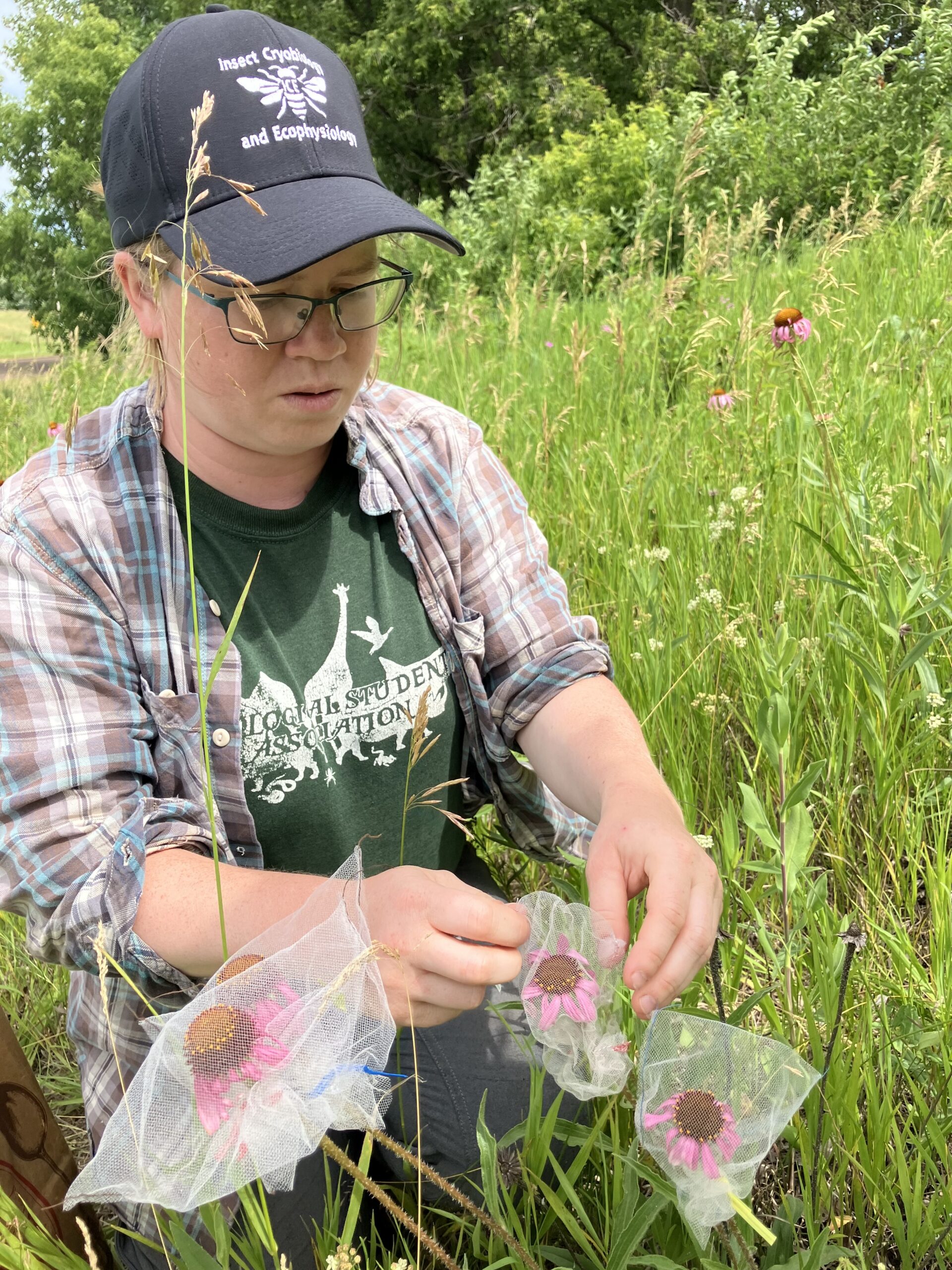We’re interested in investigating what resources are available to Echinacea visitors and learning more about the pollen and nectar Echinacea produces. We hope to learn if the nutritional resources available differ before and after burns. In 2022, Britney House developed methods for collecting nectar from Echinacea using microcapillary tubes. Read more about her methods here.
During the summer of 2024, the team collected pollen and nectar samples from Echinacea angustifolia at 12 sites in and around Solem Township, MN. We searched for and shot the ~10 plants (or, if few were available, as many as we could find) at each site that were closest to a random point. We then bagged up to five of the heads with pollinator exclusion bags for those 10 plants. Throughout the duration of their flowering, we collected pollen from all bagged plants and nectar from five of them per site.
We removed bags from pollen/nectar plants and backup plants when they were done flowering, and we collected until a a limit was set of a cumulative 10mm of nectar from each plant. This year we also collected immature florets from each bagged head at the start of sampling.
Following some experimentation, we conducted nectar collection only in the afternoons, while pollen collection could be done any time of day. In total, we collected vials of pollen, nectar, and vials containing immature florets from 60 plants. Pollen and nectar tubes were given to Rahul Roy at St. Catherine University in St. Paul, who will be doing pollen and nectar analysis. Tubes containing immature florets were sent with Grace Hirzel at North Dakota State University in Fargo, ND for pollen grain count and size analysis.
Data entry for collection datasheets is ongoing. Pollen data entry is started and nectar data is a little over half done with the help of Emma Reineke. Emma will also be using part of this dataset for her senior thesis project at the University of Minnesota.
Scans can be found at: Dropbox/teamEchinacea2024/z.pollenNectarDataEntry/scans.
- Start year: 2024
- Location: Various prairie remnants around Solem Township, MN
- Overlaps with: bbFood, nectar experiment
- Data collected:
- plant IDs (tag), location, flowering status, assessments for selection for study
- Dropbox/enrtf/designField2024/focalPlants2024.csv
- Dropbox/enrtf/designField2024/findAndBagPlants2024.xlsx
- flowering day, immature floret tube ID, pollen from N anthers in tube, pollen tube ID, tt color, nectar tube ID, quantity of nectar (mm) per floret
- Dropbox/enrtf/pollenNectar2024/scannedFieldDatasheets
- plant IDs (tag), location, flowering status, assessments for selection for study
- Specimens collected:
- TBD immature florets (at North Dakota State)
- 60 pollen tubes (at St. Kate’s)
- TBD nectar tubes (at St. Kate’s)
- Team members involved with this project: Summer team 2024, Rahul Roy (St. Kate’s), Emma Reineke (University of Minnesota), Jarrad Pasifrika and Grace Hirzel (North Dakota State University)
- Products: pending
- Funding: ENRTF

Grace Hirzel taking off a pollen excluder bag on an Echinacea angustifolia plant.

Leave a Reply